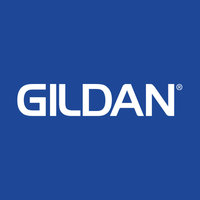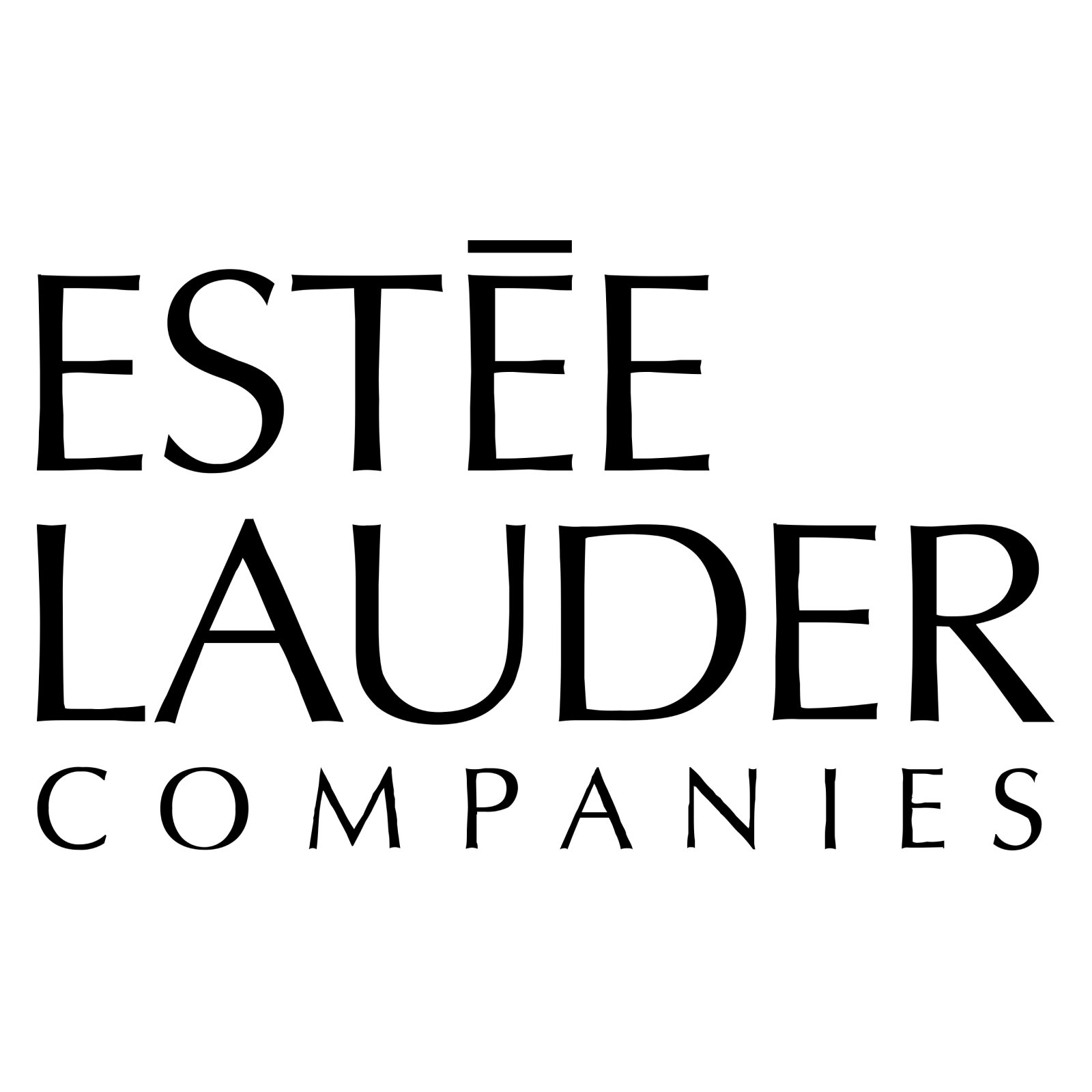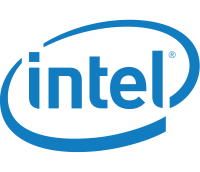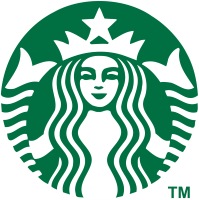
Gildan Activewear Inc
TSX:GIL


| US |

|
Johnson & Johnson
NYSE:JNJ
|
Pharmaceuticals
|
| US |

|
Estee Lauder Companies Inc
NYSE:EL
|
Consumer products
|
| US |

|
Exxon Mobil Corp
NYSE:XOM
|
Energy
|
| US |

|
Church & Dwight Co Inc
NYSE:CHD
|
Consumer products
|
| US |

|
Pfizer Inc
NYSE:PFE
|
Pharmaceuticals
|
| US |

|
American Express Co
NYSE:AXP
|
Financial Services
|
| US |

|
Nike Inc
NYSE:NKE
|
Textiles, Apparel & Luxury Goods
|
| US |

|
Visa Inc
NYSE:V
|
Technology
|
| CN |

|
Alibaba Group Holding Ltd
NYSE:BABA
|
Retail
|
| US |

|
3M Co
NYSE:MMM
|
Industrial Conglomerates
|
| US |

|
JPMorgan Chase & Co
NYSE:JPM
|
Banking
|
| US |

|
Coca-Cola Co
NYSE:KO
|
Beverages
|
| US |

|
Target Corp
NYSE:TGT
|
Retail
|
| US |

|
Walt Disney Co
NYSE:DIS
|
Media
|
| US |

|
Mueller Industries Inc
NYSE:MLI
|
Machinery
|
| US |

|
PayPal Holdings Inc
NASDAQ:PYPL
|
Technology
|
Utilize notes to systematically review your investment decisions. By reflecting on past outcomes, you can discern effective strategies and identify those that underperformed. This continuous feedback loop enables you to adapt and refine your approach, optimizing for future success.
Each note serves as a learning point, offering insights into your decision-making processes. Over time, you'll accumulate a personalized database of knowledge, enhancing your ability to make informed decisions quickly and effectively.
With a comprehensive record of your investment history at your fingertips, you can compare current opportunities against past experiences. This not only bolsters your confidence but also ensures that each decision is grounded in a well-documented rationale.
Do you really want to delete this note?
This action cannot be undone.

| 52 Week Range |
41.9
69.5
|
| Price Target |
|
We'll email you a reminder when the closing price reaches CAD.
Choose the stock you wish to monitor with a price alert.

|
Johnson & Johnson
NYSE:JNJ
|
US |

|
Estee Lauder Companies Inc
NYSE:EL
|
US |

|
Exxon Mobil Corp
NYSE:XOM
|
US |

|
Church & Dwight Co Inc
NYSE:CHD
|
US |

|
Pfizer Inc
NYSE:PFE
|
US |

|
American Express Co
NYSE:AXP
|
US |

|
Nike Inc
NYSE:NKE
|
US |

|
Visa Inc
NYSE:V
|
US |

|
Alibaba Group Holding Ltd
NYSE:BABA
|
CN |

|
3M Co
NYSE:MMM
|
US |

|
JPMorgan Chase & Co
NYSE:JPM
|
US |

|
Coca-Cola Co
NYSE:KO
|
US |

|
Target Corp
NYSE:TGT
|
US |

|
Walt Disney Co
NYSE:DIS
|
US |

|
Mueller Industries Inc
NYSE:MLI
|
US |

|
PayPal Holdings Inc
NASDAQ:PYPL
|
US |
This alert will be permanently deleted.
 Gildan Activewear Inc
Gildan Activewear Inc






 You don't have any saved screeners yet
You don't have any saved screeners yet

Ladies and gentlemen, thank you for standing by, and welcome to the Q2 2020 Gildan Activewear Earnings Conference Call. [Operator Instructions] Please be advised that today's conference is being recorded.I would now like to hand the conference over to Sophie Argiriou, Vice President of Investor Communications. Please go ahead.
Thank you, Diana. Good morning to all, and thank you for joining us. Earlier, we issued a press release announcing our earnings results for the second quarter of 2020. We also issued our interim shareholder report containing management's discussion and analysis of consolidated financial statements. These documents will be filed with the Canadian securities and regulatory authorities and the U.S. Securities Commission and are available on the company's corporate website.On the call today, we have Glenn Chamandy, our President and Chief Executive Officer; and Rhod Harries, our Executive Vice President and Chief Financial and Administrative Officer. In a moment, Rhod will take you through the results for the quarter, and a Q&A session will follow.Before we begin, please take note that certain statements included in this conference call may constitute forward-looking statements within the meaning of the U.S. Private Securities Litigation Reform Act of 1995. Such forward-looking statements involve unknown and known risks, uncertainties and other factors, which could cause actual results to differ materially from future results expressed or implied by such forward-looking statements. We refer you to the company's filings with the U.S. Securities and Exchange Commission and Canadian Securities Regulatory Authorities that may affect the company's future results.I will now turn the call over to Rhod. Rhod?
Thank you. Thank you, Sophie, and good morning to all, and thank you for joining. We hope everyone is continuing to stay safe and is keeping well.This morning, we reported our second quarter results, and as we expected back in April when we last reported, we incurred a significant earnings loss in the quarter tied to the impacts that COVID-19 is having on economic activity and, in turn, our business. However, despite the loss in the quarter, we maintained a strong focus on our key priorities: taking business decisions and actions to strengthen our competitive positioning for the long term by accelerating our efforts under our Back to Basics strategy to simplify our product portfolios, remove complexity and cost from our business, better support our customers and drive long-term market share growth, all of which I will cover shortly.Moreover, by tightly managing our business, we generated strong free cash flow of $177 million in the quarter, more than offsetting the impact of the earnings loss and improving our liquidity position, which stood at $1.2 billion at the end of June. Further, during the quarter, in order to increase our financial flexibility as we move through this global health crisis, we negotiated a 12-month covenant amendment to our existing credit agreements. The amendment provides that our leverage covenant now excludes the impact of our financial results for the second quarter from the leverage ratio calculation through the first quarter of 2021. At the same time, we also negotiated higher covenant level, and the combination of these 2 factors gives us ample flexibility to navigate through the duration of the pandemic.Finally, in line with improving demand trends, we started to resume production at various operating levels across the majority of our facilities, implementing comprehensive biosecurity protocols to prioritize the health and safety of our employees returning to work. These measures, led by our medical and human resources staff, cover testing and monitoring, safe transportation, reconfiguring the floor space in facilities to ensure appropriate physical distancing and the provision of personal protective equipment for all employees. Overall, we are proud and grateful for the way the Gildan team, both manufacturing and nonmanufacturing employees, have stepped up to new challenges and have come together during this crisis.Turning to our sales and earnings results for the quarter. Not surprisingly, the effect of the lockdowns that started in March and continued through April and May significantly impacted sales and earnings in the quarter. We generated sales of $230 million this quarter after reflecting a sales discount accrual of $25 million. Sales were down 71% from a year ago with activewear sales of $132 million down 80% and sales of hosiery and underwear of $98 million down 28% compared to last year. The decline in our overall sales was primarily driven by volume declines resulting from the significant demand downturn in the quarter and inventory destocking as well as negative product mix impacts and higher promotional discounting.Moving to demand trends in activewear. With shutdowns in effect during the quarter, imprintables distributors closed warehouses and retailers shut their doors, causing significant sell-through declines in our channels of distribution. In the U.S. imprintables channel, we saw POS decline to lows of 80% in April before starting to pick up in May as reopenings occurred, averaging down approximately 50% for the month and then ending the quarter in June down in the 20% range compared to last year. Although for the quarter, average POS was down 50%, trends improved sequentially on a monthly basis, and we were ahead of our expectations. And in some categories, like fleece and fashion basics, POS turned to positive growth in the month of June. Having said that, we have seen some pullback in POS in the imprintables channel during the latter part of July, which I'll cover a little later.In our international markets where the COVID-19 impact hit earlier than in North America, we saw POS declines continue to decelerate during the second quarter and trended better than we expected, particularly in Europe, which was down approximately 30% for the quarter. The impact on our sales from these lower sell-through levels was also compounded by high levels of destocking as distributors mostly serviced end customer demand from their own inventories. Consequently, inventories in the distributor channel at the end of the quarter were and continue to be significantly below prior year levels as our customers have adjusted to lower levels of demand.Our sales in the activewear category also reflected the impact of higher promotional incentives in imprintables, which we initiated in June and subsequently extended through July and August. These incentives are aimed at driving the ongoing sell-through of our products from distributors to screenprinters. And as a result, we recorded a sales discount accrual of $25 million during the quarter. This pricing initiative is directly linked to our Back to Basics strategy where we are leveraging our low-cost position to reinforce market leadership, drive further market share gains and grab available demand in what we know is a difficult market environment. We know this playbook well, and though it is still early days, we are very pleased with the results of this initiative in all 3 categories where we are running the promotions: basics, fashion basics and fleece.Finally, in the retail channel, sales of activewear were also down due to the widespread closure of retail stores, most notably impacting our business with department stores, national chains, sports specialty retailers and global lifestyle brand customers, partly offset by better sell-through in the mass and online channels.Moving to our hosiery and underwear sales. The overall decline in this category was due to lower sock sales, partly offset by strong performance in underwear sales where we saw a 23.5% increase in sales during the quarter compared to last year. Lower sock sales reflected the overall industry demand decline in this category as well as the impact of retailer inventory destocking.Conversely, we were very pleased by double-digit sales growth performance related to our underwear programs despite a decline in overall industry demand in this category driven by sales of private brand underwear in mass and underwear products sold through online platforms. With our private brand men's underwear program now rolled out in all stores of our largest mass retail customer in a new display format, we have seen sell-through trends accelerate meaningfully and are very encouraged by the significant gains in market share related to this program.This covers our sales performance, and now let's move to earnings where I'll talk about the $224 million of GAAP charges that we took in the quarter; $130 million of COVID-related charges; and $93 million in accelerated Back to Basics initiatives that are simplifying our business, lowering our cost structure and positioning us for the future.So starting with the COVID-related charges, the bulk of these costs primarily related to unabsorbed manufacturing labor and overhead costs incurred in the quarter while our facilities were idle or operating at low capacity levels. These cash and noncash costs, which amounted to $86 million, would have normally been absorbed into inventory if our facilities have been running at normal levels. However, as we kept most of our facilities closed for the second quarter to manage and align our operations and inventory levels, these costs were treated as period costs, which flowed through our cost of sales in the quarter. In addition to the manufacturing idling costs, we recorded a $25 million charge related to the unwinding of commodity positions due to lower production requirements during the second quarter and through the remainder of the year.During the quarter, we also made a very difficult decision to further reduce our global workforce with reductions of approximately 6,000 people in manufacturing and 380 people in SG&A positions. Overall, this decision allows us to adjust our manufacturing, sales and administrative support infrastructure with the current business impact of COVID-19 and provides us with good flexibility as we move into the back half of the year. Charges associated with the workforce reductions amounted to approximately $8 million for the second quarter. While you would expect higher charges related to these headcount reductions, most manufacturing employee severance costs are based on statutory requirements and are accrued on an ongoing basis from date of employment. Annual cost savings related to these employee reductions and the yarn-spinning closure, which I will talk about as part of our Back to Basics initiatives, are projected to be approximately $46 million.Finally, as a result of the current environment, we took an inventory reserve of $14 million related to the decline in the net realizable value of certain retail end-of-line products.While we incurred significant COVID-related costs in the quarter, we also recorded $93 million in charges tied to actions related to our Back to Basics strategy. Managing our business through the effects of the pandemic led to decisions and actions to significantly accelerate initiatives tied to our strategy of simplifying our business and optimizing operations, which, in turn, we expect will materialize in further cost reductions and better position us for market recovery.Consequently, we incurred additional inventory charges of $26 million related to our imprintables SKU rationalization initiative and $16 million related to our retail product line inventory management initiative. While the work we have done to optimize our imprintables product offering is now complete, we will continue to review our retail product line offering for further potential improvements as we move through the back half of this year. We also recorded restructuring charges of $29 million in the quarter primarily related to the planned closure of a smaller specialty yarn-spinning facility in the U.S. Lastly, charges related to our Back to Basics strategy also included the $25 million impact of the strategic pricing action in imprintables taken in the quarter covered in the sales discussion.So putting this all together, we reported a gross loss in the quarter of $148 million or $122 million on an adjusted basis after adding back the SKU rationalization charge of $26 million. The significant decline compared to last year was due to the combination of lower sales, manufacturing idling costs, inventory provisions and the impact of unwinding the excess commodity commitments.On a gross margin basis, we reported a negative GAAP margin of 64.6% and 52.2% on an adjusted basis, mainly as a result of the COVID-related and Back to Basics charges just discussed. Of these charges, $196 million impacted the gross loss and $170 million impacted the adjusted gross loss for the quarter. Excluding these charges would have resulted in an adjusted gross margin of 18% in the quarter, down primarily due to the impact of negative product mix and discounting. We expect the gross margin will revert back to more normal levels as our sales recover. Further, we remain committed to driving towards our long-term gross margin and SG&A margin targets, which we have previously outlined under our Back to Basics strategy.SG&A expenses for the quarter of $65 million were down $27 million or close to 30% compared to last year, reflecting the impact of lower compensation, lower distribution costs driven by lower sales volumes and cost containment efforts. Separately, during the quarter, we reported a recovery on the impairment of trade accounts receivables line of $6 million due to strong collections in the quarter, which has led to lower expected credit losses.Summing all these elements up, we reported an operating loss of $236 million and an adjusted operating loss of $180 million during the quarter. And after financial expenses of $60 million, which were up $6 million over last year due to fees incurred in connection with the covenant amendment and higher average borrowing levels, the overall net loss for the quarter totaled $250 million or $1.26 per diluted share and $197 million or $0.99 per diluted share on an adjusted basis.Normally, I would close with the discussion of our guidance. However, having suspended our annual guidance in March due to the uncertain COVID-19-impacted environment, let me instead give you some color in terms of what we're currently seeing in the marketplace.As we moved into July, we were initially encouraged to see further improvement in imprintables POS in the U.S. from quarter end levels. However, we have now seen some retraction in POS during the latter part of July, and POS is now down in the 15% to 20% range as reopenings have slowed or reversed in certain states in the U.S.On the retail side, we are encouraged by our sales so far in the third quarter, which, through July month-to-date, are tracking slightly ahead of prior year levels. Although, overall, we have seen further POS improvements in July, POS is mixed in retail depending on the channel. Sell-through in mass and online channels continues to perform strongly, up in the double-digit range, while POS in the mid-tier and sports specialty channels, although better than what we saw in the second quarter, is still being impacted by weak traffic trends and continues to show declines in the 20% to 30% range.That finishes our update. And in closing, while the trajectory of the pandemic remains uncertain, we continue to focus on strengthening our competitive positioning and driving market share gains. We believe we have acted swiftly and executed on important initiatives to provide us with the necessary financial and operating flexibility to take us through this challenging environment and which will allow us to emerge as a stronger company for the long term.And with that, I will turn it back over to Sophie.
Thank you, Rhod. Before moving to the Q&A session, [Operator Instructions]I'll now turn the call over to the operator for the question-and-answer session. Diana, go ahead.
[Operator Instructions] Your first question comes from the line of Paul Lejuez of Citigroup.
It's Tracy Kogan filling in for Paul. I was wondering if you could talk about the specific categories that you took promotional pricing in. And was it in specific categories? Or was it across the board? And do you anticipate having to take any further action in the current -- in the coming quarters? And then just secondly, I wonder about the state of your distributor partners and if any of them are financially challenged and if you think there are any troubles perhaps on the horizon there.
Yes. I'll start off with the pricing. Look, as far as our pricing is concerned, I mean, we went into April with negative POS of 80%. And then we started to promote our fashion basics and selective colors, which we saw great signs in terms of our POS. Then we expanded that to all of our colors in fashion, which continues driving our POS. And then we added basics and fleece. So there's really 3 categories: our fashion basics, our basic traditional T-shirts and some of our fleece categories are really -- it's not all of the products. It's just the core items within those categories. And we've seen a big improvement in our POS in all 3 segments, and to what Rhod alluded in his script is that we even see -- we saw in the beginning of July even trends towards positive POS overall, which was driven mainly by the big improvement of these styles, which has somewhat come down a little bit towards the end of July, but still tracking pretty good. So we're pretty excited about our pricing strategy as we go forward.And I think, more importantly, with the pricing strategy, it all ties into what we're doing from a Back to Basics strategy. And the 2 go together because we're going to take significant cost out of our structure that will allow us to maintain very competitive prices in the market and continue to grow our share as we go forward. I mean we've taken out -- in our SKU rationalization, we're taking 2/3 of our product lineup. We used to manage 30,000 SKUs within our brands. We're down to 10,000, so that's a major impact in our overall cost, the manufacturing efficiency, reductions in SG&A, improvements in our service and our inventories that we're going to be able to have both in the channel and our warehouses, and a reduction of overall working capital and an improvement in RONA as we continue to go forward.So although we're pricing more aggressively today, and we probably most likely will continue that as we go forward, but the economics of our business will be the same is because we're going to absorb costs out of the system and provide better returns as we go forward and continue to emphasize our leader position in the channel. As far as the distributors are concerned, our distributors basically have done very well. Most of them are back. I mean POS has obviously improved. One of the reasons why we reversed our reversal on bad debts is because of the payment from our distributors, so the cash flow is coming in. And we don't have any concerns about our distributor base today.
Your next question comes from the line of Vishal Shreedhar of National Bank.
Just wondering, as the markets recovered, did you see destocking turn to restocking? And can you give us a sense of how much months of inventory are held by your wholesalers?
Well, we've destocked about 1/3 of our inventory that was in the channel end of Q1, which is roughly about $150 million in the distributor channel. And we also destocked pretty significantly in retail as well. But as far as the wholesale channel, we destocked. And the other thing is that the -- typically in Q2, we sell a lot of fleece going into the fleece season, and we didn't ship any of those all quarters basically, they'll be shipped as we move into Q3 and Q4 as an at-once basis as the market needs those goods. So we won't extend dating terms on fleece like we historically have done. So those are really the 2 factors that have reduced sales basically in the quarter, particularly in footwear and besides the negative POS.
Okay. And regarding your PPE ambitions and thoughts, has that evolved regarding making masks and gowns? Or do you still expect a negligible contribution from that business?
Look, we're doing our part in terms of helping local governments with the masks and gowns as part of the -- our initiative in terms of COVID. But you have to understand that it's not a long-term opportunity for us. I mean masks pre-COVID were selling for $0.03 a piece. Today, they're selling at $1.50, so there's a lot of capacity that's coming online in Asia particularly that we think that that's not a long-term sustainable business. But we'll do our part like -- as best we could to provide support to the local governments in the meantime.
Your next question comes from the line of Stephen MacLeod of BMO Capital Markets.
I'm just wondering if you can -- if you have visibility or can provide some insight into sort of what end markets are driving the sequential improvements in POS in the imprintables business.
Well, the thing that's really happened is, I guess, from a longer-term perspective, the big positive is people are staying at home in casual wear. And I personally have been at home since the beginning of the crisis, and I've worn out my T-shirts and my sweatshirts, right? So I think that's a real positive sign for us. So the traditional way where people might have gotten a shirt in a gathering or jog, run or something that may not be occurring, they're finding other ways to get those products, I mean, and that's, I think, is the key. So we've seen online sales, the distributors that -- or not distributors, but the screenprinters that sell online, that's a big growing area. It's probably doubled in sales during the COVID crisis, I would say.And the other big thing is reselling, I mean, a lot of reselling of our products online. And also one of the big areas that's the strongest part of our business right now is our national account business where we have large screenprint customers that basically provide product to retailers. So the supply chain -- global supply chain is just not there today. So we're benefiting from -- as people look into buying more products, basically, locally, at once, we think that that's a big opportunity. So retailers are putting more of the screenprinted-type T-shirts on their floor right now as they reopen up. So people will find a way to get the product. I think that's the message here. Obviously, there was a shock in April when everything came to a fashion halt. But I mean, at the end of the day, we believe that the long-term viability of products that we make is there and the market [ will have ] more people to continue buying our products. And we're well positioned with our product strategy and our price strategy, we think, to capture a significant amount of share as we go forward.
Okay. And then with respect to the gross margin, Rhod, you gave some good color in your remarks around all the puts and takes on gross margin in the quarter. And you indicated that you expect it to sort of revert to more normal levels as your sales recover. Is there anything you can provide in terms of anything more discrete around how you expect your gross margin to evolve like into Q2 -- into Q3, sorry, and the back half of the year?
Yes. Thanks for the question, Stephen. So if you look at the gross margin, as we said, the gross margin was down in the quarter. And it was down for the 2 reasons that I highlighted. It was down because of negative mix, about 600 basis points. And it was down because of the discounting, the promotions that we've provided in the -- or we're running in the printwear channel, which, the impact of that is about 400 basis points, right? So effectively, that was driven by this negative mix impact. And the negative mix impact was driven by the mix associated with lower fleece that Glenn called out. And then also, if you move into the retail channel, you'll see that we sold a lot -- a lower level of our higher-value retail products as the mid-tier channel was closed, the sports specialty stores were closed, right? So that had a negative impact as well. So as we move into the back half of the year, we expect, as sales recover with all of the reopenings that, effectively, our mix will revert back to normal levels.And then with respect to -- from a promoting perspective, we've talked about that. We'll see how things evolve in the back half. But I think one of the things that we're really driving is the cost of the business, and we would expect that, obviously, to contribute to gross margin as we move through the back half of this year, then into 2021 and then, obviously, forward as we drive towards those long-term Back to Basics targets.
Your next question comes from the line of Luke Hannan of Canaccord Genuity.
Glenn, I want to ask you on the decision to institute the sales discount. Was this something that was determined sort of internally? Or was this determined based on what you…
I didn't hear your question. It didn't come in clear. Can you just repeat that, please?
Sure. Yes. So I was just saying, the decision to institute the sales discount, was that something as reactions to what you were seeing in the channel? Or is that more a decision internally based on what you guys have in terms of your low-cost manufacturing footprint?
It's a decision on -- we were -- we drove the promotional activity in the market based on our ability to look at where we are today and to continue our focus on our Back to Basics strategy, which is basically focusing on fewer SKUs, bringing them to market at the right price and driving market share. So we've tested the -- like I said earlier, we tested our strategy early on. And as we saw the results, we continued our pricing strategy. And I think it's important, with all the initiatives that we put together, although the 400 basis points of negative margin, that will -- even if we continue to price at these levels, our margins should normalize based on all the cost savings that we have go forward. So obviously, the upside for us is that we reduce our promotion and then we'll see margin expansion. But I think we can consider where we are now and how we positioned our Back to Basics strategy that we can pretty well be very aggressively priced and still maintain normalized margins.So I think that's sort of where we're heading right now as we continue to ramp up. So now we've come back and we started ramping up all of our manufacturing [ facilities and ] really just building it up to about 70% of the capacity that -- pre-COVID. And at the same time, our focus is also continuing to focus on cash flow. So we're still working and doing a lot of work on reducing inventories and generating free cash in the back half of the year. So all these things combined have sort of positioned our strategy to make sure that we're positioned for the long term. And I think that the most important thing I can leave you with today is that everything that we've done over the last 3 months is going to make our company very strong, as we emerge from this whole situation, including the -- I think that one of the biggest opportunities is basically the whole shift in the global supply chain.I mean if you look at the world in the future, people that were able to go and find in Asia and go to see some manufacturer and go buy product, they're not running so fast anymore. So I mean if you look at -- we think the work, there's a lot of opportunity for us, particularly in our retail and our global lifestyle brands as we continue to move into '21 to leverage our low-cost manufacturing and basically take advantage of the big shift in the global supply chain.
Got it. And then one last one for me. I'm just curious to know what progress has been like in Bangladesh. I know you guys are in the early stages of building out the facility there, so I'm just curious to know if you can give any color on how that's progressing.
Yes. Look, we're slowly progressing in Bangladesh. I mean the reality is that we're probably going to be behind by 6 months, and the plant is scheduled now to start in Q2 2022. So we are cautiously seeing what happened over these 3 months. And then, obviously, now we're putting our minds around going forward. But look, Bangladesh for us is a strategic part of our overall business. I mean it's not just so much functionally for our international growth, but it's also a function of driving our fashion basics and other categories that we have. So it's not being built just strictly to support international. It's also to support where we think the market is going into the future as we continue to gain share in those categories. So we're going to definitely go full speed ahead with the project, but it's going to still be delayed probably about -- by 6 months.
Your next question comes from the line of Sabahat Khan of RBC Capital Markets.
Just a commentary in the press release around the fashion basics category turning positive in June, just wondering maybe you can talk about the drivers of that. It was just surprising given the current macro backdrop. I think some of that category services, I think, the uniform business on the corporate side, is it that? Or was there something else driving that growth?
No, this category is not really on the corporate side. I mean the corporate side is really -- in our case, is more the basics, actually, because they're used for advertising, event planning and other things. So that's -- that category basically is still down. But we've come back because we think we're generating share in that category by our pricing strategy. But the fashion side of it is completely different. It's more traditional screenprint-type business. And look, at the end of the day, we have basics and we have fashion, and the big 2 differences between these 2 shirts: one is open-end and one is ringspun. And we define this as fashion, but the reality is that every one of these shirts has a tearaway label, so I mean there are basic features for the tearaway label with different fabrications.So consumers are looking for value right now. And the reality is that when you look at all the shirts in the industry, there's not a big differentiation between all these shirts. Price is a big driver of product in our channel, and we've got a low-cost manufacturing. We're investing heavily in cost reductions and new capacity expansion. And we think that we're going to continue to aggressively price this category and take market share. It's the area of the growth for us, and we're going to make sure that we get our share of that growth.
Okay. And then on the working capital, it looks like there was a sizable lift that drove the free cash flow there. Just trying to get an idea of what drove the strong kind of accounts receivable during the quarter. Was it from your larger customers, the smaller ones? And then sort of how are those collections trending into Q3, if you can provide some color there?
Rhod?
So the big reduction in accounts receivable was really driven across the board, right? As we -- as Glenn mentioned earlier, I think the distributors have done a great job as they work through the second quarter and effectively worked with us. And we've collected from our distributors, we've collected from our retail customers. And so I would say, very definitely, we're very pleased with the way that our receivables came in through the quarter. And as we mentioned earlier, we've taken a reduction in our allowance for expected credit losses on receivables. With respect to inventories, we sold down out of inventories in the quarter as we expected to do with all of our operations basically down or operating at very low levels. And again, we're very pleased with the cash that we generated from inventory.And then with respect to our payables side, we work with a lot of our suppliers, a lot of our partners. And we were able to manage that, I would say, very well during the quarter. So all in all, I think it was a great job by the team, the whole team, to manage working capital and to really effectively work our way through what is a difficult environment with everybody in order to drive that cash flow. And also really, this sets us up well as we continue into the back half of the year.
And then if I could just squeeze in one on the inventory. I guess, as you restart your facilities, I think it was about $150 million to $160 million left to working capital now. Should we expect that to remain positive through the back half of the year as you start to restart -- or as kind of the industry restarts and you start to shape out? Or how should we think about that line item through the back half of '20?
We should think about -- look, our focus is to continue to reduce inventory but, at the same time, improve service because we're focusing on less products and less SKUs. So we think there's still a significant amount of inventory we can take out of our system and generate free cash between now and the end of the year. So we're focusing on that, and we're ramping up our production. But obviously, we're not ramping up our production at the same rate of sell-through. So as we continue to grow and sell in Q3 and Q4, our production will be at a lower level than our actual sales that will allow us to continue to reduce inventories and generate free cash in the back half of the year.
If you look -- Saba, if you look at the full year, obviously, we did a great job in the second quarter. And one of our objectives really for this year, right, as we move through a difficult environment is to generate free cash flow, have positive free cash flow for the full year, and we're still very focused on that.
Your next question comes from the line of Brian Morrison of TD Securities.
Glenn, you've alluded to my question several times, but I want to ask it directly. In terms of your incentives and your promotional activity, does this in any way impact your 30% gross margin target? Do you think you can achieve 30% in each of retail, private label and Printwear? And just maybe update us on -- is the facility consolidation initiatives and SKU rationalization, is that complete at this time?
The Printwear is definitely complete. There's still a little bit of work to do in retail. But as far as our overall margin is concerned, we are not changing aspirations to get to the 30% margin. And we're also focused on the sub-12% SG&A. So let's just look at that as also a big driver of our focus right now. And as far as the Printwear is concerned, we've gotten our product line down to where we need it to be. And you just -- I can't emphasize the amount of costs we're going to take out of our system by just streamlining. It's going to be excessive, and it's going to be very positive to overall manufacturing. And we're providing the same look at our retail business, and not on the same scale because, obviously, it's not the same type of scale business, but we're going to continue to focus on large programs that give us good returns and few SKU, right, so, I mean, similar to where we are in underwear right now. So we have a huge opportunity here to really consolidate our manufacturing base and focus on efficiencies and drive towards the target of our 30%.I think as we move into next year in our factories, we're not planning to see the Printwear business recover fully. I mean we just don't know at this point in time. So next year, I think, we'll look at if we can get our margins up to normalized-type margins and then move from there on to our goal, I think that would be a good outcome for us with a good SG&A reduction is how we're trying to see things. But the promise is that things are a little bit of a yo-yo, right? So -- but I think we're really well positioned right now. And also focusing on our working capital, cash flow generation, which I can't emphasize more, and making sure that our RONA is improving, right, because all these things will ultimately allow us to get a better growth on return.
That's good. And then with respect to the shift in your floor plan strategy at your major retailer now fully complete, and I think you said significant market share gains, are you seeing the potential for an accelerated -- acceleration of the potential for product category expansion on that private label initiatives?
Well, we've had quite a bit of expansion this year. I mean the -- a lot of the new products in the new space that we've obtained this year has really only got set probably the first week of June. So in Q2, although our underwear has done fantastic, it really hasn't really felt the effect of how well things are going to go. So we're very optimistic of all of our retail business, to be honest with you, because our online business have doubled in the quarter. So we're doing well everywhere. So I mean, retail, which is tracking on a year-over-year basis, is positive already in July, and we're going to see continued growth as we move into the future.
Okay. Just very quickly, Rhod. Do we anticipate in terms of your period costs that get expensed in Q1 and Q2 here as we go through the remainder of the second half, manufacturing, operations have restarted, is that now behind us?
No, you'll still see some period costs rolling through in the third quarter, right, because, as Glenn said, effectively, we've got our facilities running 7% to 8%, in that range. And so when you -- we don't have that effectively running at full levels of operation, right? So at those lower levels, you still will see some period costs running through in Q3. And then we'll see where we are in Q4.
Your next question comes from the line of Chris Li of Desjardins.
Glenn, I just want to confirm what you said earlier. You guys are now restarting your manufacturing capacity with the view that imprintable sales will be back to about 70% of the pre-COVID sales. I'm making sure, did I hear that correctly?
No. Right now, the Printwear sales are somewhat in June and, let's say, what we're tracking July is 15% to 20% negative. We haven't -- obviously, we don't know what will happen next year, but our manufacturing basically is ramping up to about 70% of our normalized capacity, and that's because sales are -- they're minus 20, that means there's a delta of 10, right? So -- and what we're doing is we're drawing down inventory. Now sales continue to grow like we saw at the beginning of July. Then we'll just increase the capacity, but we'll keep it up below our actual expectations of sales because we want to continue to look at the cash flow generation and reduction of inventory. So we can manage that as we go, and we're just bringing on in stages. So we'll see how things evolve as we move into the second, the third and the fourth quarter. But we're pretty optimistic, and we know our pricing strategy is working, and we'll see where it takes us. So we haven't guided to next year at this point, but we're bringing it on as we needed.
Okay. Great. That's helpful. And then just on the men's underwear, up 23.5% in Q2. Did that strength continue into July? Or was part of that strength related to just pent-up demand as people started shifting back to more discretionary?
No. The overall category, I think, is slightly down overall. So we're selling our product, and it's not just our private label business, but as well as our Gildan brand, which is doing very well at the retailers and online customers that are basically supplying and selling our products. So it's a combination of those 2. And we have significant share gains basically in underwear in the quarter. I mean it was quite substantial on an overall basis, so it's going very well. And it's just a question of our positioning in the market, and we're pretty excited about the future.
Okay. That's great. Maybe a very quick one for Rhod. In last quarter, you mentioned you guys were maintaining your fixed cash cost at $35 million to $40 million per month. Is that still the case? Or is this starting to move up as you restart some of your capacity?
Yes. The $35 million to $40 million was the guidance that we gave effectively when we've got everything idle, right, if you look at our whole system effectively when it's idle. And if you look at how we performed during the quarter, we're very definitely -- probably in April, effectively, we're a little bit above that. As we got into May, we could see that if we stripped away some of the costs associated with running facilities at very low levels and sort of starting a bit of the ramp back, we were very definitely at that $35 million range. So I think we feel very good about our cash burn, right, associated with our underlying cost base.And again, as we moved through the quarter, actually, we've done more. As we talked about some of these initiatives where we've taken out cost in certain areas, that will also reduce our base underlying cash burn on a go-forward basis. So I think we feel, like, overall, we're in very good shape, our liquidity is very strong, right, at $1.2 billion. And I think from an ability to obviously weather further impacts on a go-forward basis, we've got a very strong balance sheet, a very strong access to liquidity. We're winding down inventory, right, as we go forward in -- with the strategy where we balance up production. And so I think, overall, we feel very good about our positioning.
Your next question comes from the line of Matt Bank of CIBC.
First question is, can you give any color on what is happening in your 2 biggest imprintables end markets specifically, so corporate and then merchandising and tourism?
Well, I mean, look, it's hard for us to get a handle on that, to be perfectly honest with you. But look, if the market is slowly recovering, and maybe we can see that tourism is more of a local phenomenon where people are traveling and spending money closer to home, so instead of people coming from outside, they're -- basically, it's more localized. So there is activity happening on all these areas. So the overall market, I would say, is -- probably the event-driven items are still -- large gatherings are still negative in the overall market, and those other categories are coming back.But I think one of the areas where we're seeing the strongest growth is online, basically selling through -- [ screenprinters ] that sell online as people are at home and looking for products, screenprinted T-shirts that didn't go all day or didn't get something from a corporate event. So people are finding other venues to get the product, and that's a result of -- we see it as coming back in terms of our POS based on our market share gains from our pricing strategy but, at the same time, as the market recovers.
Okay. And then just a follow-up on that. Are you able to give roughly what percentage of other imprintables end market is related to large gathering-type events?
It's just pretty hard to do that, to be honest with you. But it's, let's say, 30% and then -- I don't know because everything is a large gathering, right? I mean a picnic is a large gathering. Running a marathon is a large gathering. I mean rock concerts, hockey games, I mean, they're all gatherings. But people want to [ -- instead of buying hockey ], they're buying it online, right? So those are the types of things that, even though there may not have the event, they're still able to find products in different format, right? And they're having house parties and who knows, right?
Okay. And then I just wanted to clarify on a question asked earlier, I just wasn't sure. On the question of your customers' inventory levels, are your customers keeping inventories at the lean levels that they were at after the destocking process? Or are they now restocking, which is -- which would be basically a tailwind?
Right now, I'd say that they're more or less staying at these levels. And in fact, there could be a little bit more destocking, to be honest with you, in this quarter because they're -- I think that they're -- and that may be a little bit. But overall, I would say it's cautious, stable to slightly down on the inventory levels right now.
Your next question comes from the line of Stephen MacLeod of BMO Capital Markets.
My follow-up question has already been answered.
And there are no further questions at this time.
Well, thank you, everybody. I'd like to thank everyone for joining us once again, and we look forward to speaking to you very soon. So stay safe, and have a great day. Thank you.
Thank you for participating in today's conference. This concludes today's call. You may disconnect at this time.